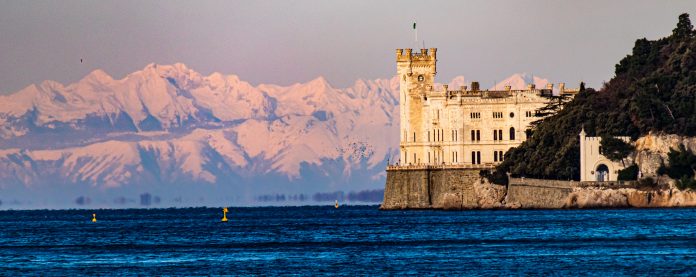by InTrieste
The historic Miramare Castle, with its sweeping vistas and lush gardens, has long been a beacon for tourists. Yet, as visitor numbers surge, ensuring smooth and sustainable access has become paramount. In response, Miramare is embarking on a series of ambitious initiatives designed to enhance accessibility and ease entry for its guests.
In recent weeks, the castle’s administration has entered into a groundbreaking three-year Memorandum of Understanding with Trieste Trasporti Spa. This partnership is aimed at addressing common mobility interests, with a particular focus on enhancing access to one of the region’s most treasured cultural landmarks while embracing environmentally sustainable solutions.
Under this agreement, several implementation plans are set in motion. These include the management of parking within the park’s interior and the identification of additional parking areas. Furthermore, internal shuttles will be deployed to support visitors’ mobility within the complex, facilitating seamless access to the museum and other attractions. This initiative also sees collaboration with various public and private entities to ensure its success.
Concurrently, promising discussions with Trenitalia, the Italian railway operator, are paving the way for an improved public transport experience. In collaboration with Trenitalia Friuli Venezia Giulia Group Office, efforts are underway to promote the use of trains to the small but picturesque Miramare station. This includes exploring the development of the Miramare Line, aimed at providing direct access to the castle.
Parallel conversations are ongoing with the International School for Advanced Studies (SISSA) to utilize unused parking spaces at SISSA’s Via Beirut location, which is conveniently situated near the museum. These efforts reflect a broader commitment to ease the strain on the primary coastal entrance, which remains a favorite among tour operators and cruise ship passengers.
Cycling enthusiasts are not forgotten in these plans. The museum’s management highlights that visitors can also reach the site on two wheels, with dedicated bicycle parking and a municipal bike-sharing station available at the park’s entrance.
Despite these comprehensive measures, the museum’s administration acknowledges that these solutions are not final. However, they represent significant steps towards alleviating congestion at the main entrance and promoting more sustainable visitor access.
In a strong recommendation, the museum advocates for the use of trains and the Delfino Verde boat service as preferred modes of transport from Trieste. This sustainable route offers travelers a brief but scenic journey to the quaint Miramare station, from which a picturesque descent through the park leads to the castle, with possible stops at the Greenhouses and the Small Castle along the way. For an especially enchanting return to the city, visitors are encouraged to head to the Grignano marina, board the Delfino Verde, and enjoy a maritime voyage back to Trieste.
As Miramare Castle continues to welcome visitors from around the world, these initiatives underscore a commitment to enhancing the visitor experience while preserving the serene beauty and accessibility of this historic site.





























